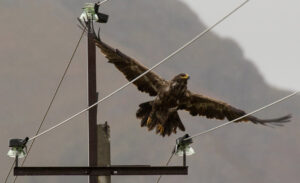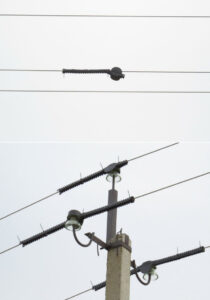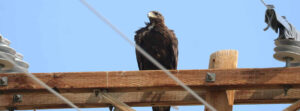Third International Scientific and Practical Conference “Eagles of the Palearctic: Study and Conservation”
Raptors Conservation. Suppl. 2. Proceedings of Conferences
Retrofitting to Last – Selecting Optimal Wildlife Protection Products
Harness R.E., Eccleston D. (EDM International, Inc., Fort Collins, Colorado, USA)
Contact:
Richard E. Harness rharness@edmlink.com
Duncan Eccleston deccleston@edmlink.com
Recommended citation: Harness R.E., Eccleston D. Retrofitting to Last – Selecting Optimal Wildlife Protection Products. – Raptors Conservation. 2023. S2: 406–408. DOI: 10.19074/1814-8654-2023-2-406-408 URL: http://rrrcn.ru/en/archives/35172
Many power pylons in raptor habitat pose high electrocution risk to raptors, which can be mitigated with insulation products. Retrofitting may require a service outage and can be expensive; labor costs are often far greater than materials. Because concrete, steel and wood pylons often last for 50 years or more, utilities that select high quality raptor mitigation products receive much greater yield on their investment. To maximize mitigation success, utility engineers should consider specific environmental stresses that may affect product longevity and effectiveness in their service area. IEEE 1656–2010 – IEEE Guide (DOI: 10.1109/IEEESTD.2011.5722090)1 for Testing the Electrical, Mechanical, and Durability Performance of Wildlife Protective Devices on Overhead Power Distribution Systems Rated up to 38 kV recommends a sequence of test procedures designed to ensure that products will not compromise system performance and that products will be effective and durable despite long-term exposure to UV, high winds, and/or salt fog. A growing number of vendors have performed IEEE 1656 testing, which facilitates direct comparison between competing products; however, test reports must be carefully reviewed because not all vendors have strictly followed IEEE guidance. Field implementation is a key determinant of project success, therefore linemen should have an opportunity to test candidate products in real-world situations and assess whether they are easy to install within utility safety and work practices and are compatible with the system. The goal of wildlife mitigation product selection is to identify an optimal suite of products that will: a) minimize the possibility of an animal electrocution or related outage; b) provide a long service life; and c) be readily adopted by field staff.

Steppe Eagle (Aquila nipalensis) takes off from a power line support equipped with bird protection devices six years ago. Some caps began to fall due to the decay of ties securing them to the wire. Photo by M. Horvath.

Examples of BPDs breaking and being lost due to the destruction of ties made of low-quality plastic. Photo by O. Goroshko.

The BPD material must withstand stress caused by eagles perching on them – a Golden Eagle (Aquila chrysaetos) on a power line support equipped with BPD. Photo by D. Dwyer.
1 http://ieeexplore.ieee.org/document/5722090
